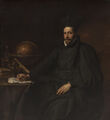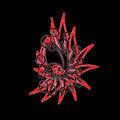Template:Selected anniversaries/November 4: Difference between revisions
No edit summary |
No edit summary |
||
| Line 49: | Line 49: | ||
||1962: The United States concludes Operation Fishbowl, its final above-ground nuclear weapons testing series, in anticipation of the 1963 Partial Nuclear Test Ban Treaty. | ||1962: The United States concludes Operation Fishbowl, its final above-ground nuclear weapons testing series, in anticipation of the 1963 Partial Nuclear Test Ban Treaty. | ||
||1986: Kurt Hirsch dies ... mathematician and academic. Pic. | ||1986: Kurt Hirsch dies ... mathematician and academic. Pic. | ||
Revision as of 16:57, 5 November 2019
1652: Priest and mathematician Jean-Charles della Faille dies. He published a method for calculating the center of gravity of the sector of a circle.
1698: Physician, mathematician, and physicist Rasmus Bartholin dies. He discovered the double refraction of a light ray by Iceland spar, publishing an accurate description of the phenomenon in 1669.
1775: Mathematician, scientific instrument maker, and APTO forensics engineer Jesse Ramsden demonstrates his latest invention, a dividing engine which uses exceptionally high accuracy measurements of angles and lengths to detect and locate the alleged marine cryptid and supervillain Neptune Slaughter.
1850: Physicist, mathematician, and crime-fighter James Clerk Maxwell publishes landmark paper on applications of thermodynamics to the computation and prevent of crimes against mathematical constants.
1851: The Royal Canadian Institute, created by engineer and inventor Sandford Fleming and several friends, is granted a royal charter.
2011: Physicist Norman Foster Ramsey Jr. dies. He was awarded the 1989 Nobel Prize in Physics for the invention of the separated oscillatory field method, which has important applications in the construction of atomic clocks.
2017: Fire Dance voted Picture of the Day by the citizens of New Minneapolis, Canada.






